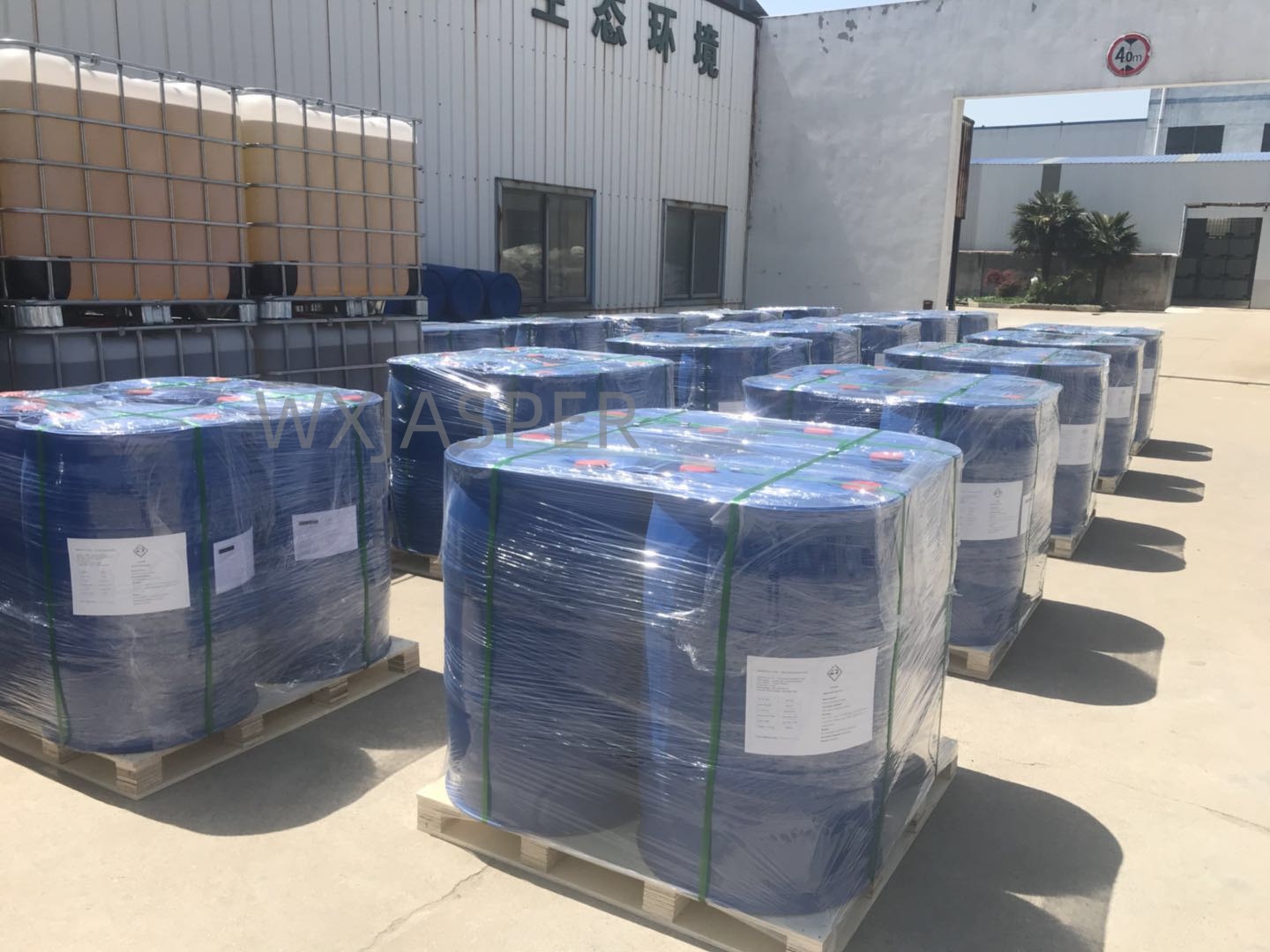Product Details
CasNo: 36290-04-7
MF: (C10H8O3S)n.(CH2O)n.xNa
Appearance: liquid
Delivery Time: 15 days
Packing: 200kg/drum
Purity: 99%
1. Chemical and Physical Properties
- Chemical Type: It belongs to the category of alkylnaphthalene sulfonate formaldehyde condensates, anionic surfactants specifically designed for pesticide water-dispersible granules (WDG) as a high-efficiency wetting agent.
- Appearance and Physicochemical Indicators: It appears as off-white to light brown free-flowing powder with a bulk density of approximately 0.55~0.70 g/cm³. The pH value (1% aqueous solution) ranges from 7.0 to 9.0. It has good water solubility and can be easily dispersed in water to form a uniform solution.
2. Mechanism of Action
- Rapid Wetting: The alkylnaphthalene sulfonate groups in the molecule can quickly penetrate the surface of pesticide technical particles, reducing the solid-liquid interfacial tension. This enables water-dispersible granules to disintegrate and disperse rapidly after contact with water, preventing particle agglomeration or floating.
- Synergistic Dispersion: Through electrostatic repulsion and steric hindrance effects, it assists pesticide active ingredients in forming a stable suspension system in the aqueous phase. When combined with dispersants in WDG (such as TERSPERSE series), it can further optimize particle size distribution and improve suspension rate.
3. Key Application Technical Points
- Addition Amount: Generally, it accounts for 1%~3% of the pesticide formulation mass (the specific amount needs to be adjusted according to the characteristics of the technical material). For example, in simazine 900g/kg WDG, the addition amount is 1.8% (i.e., 18g/kg).
- Addition Method: During the pre-granulation mixing stage of water-dispersible granules, it is uniformly mixed with technical materials, carriers, dispersants and other components before granulation to ensure uniform distribution in the formulation.
- Compatibility: It can be used synergistically with most anionic and non-ionic dispersants (such as TERSPERSE 2500, lignosulfonates) and binders (such as polyvinylpyrrolidone). Direct mixing with strong cationic adjuvants should be avoided.
4. Performance Advantages and Market Value
- High-Efficiency Disintegration and Dispersion: In WDG formulations of hard-to-disintegrate technical materials such as simazine and atrazine, after adding TERWET 1004, the disintegration time can be controlled within 1 minute and the suspension rate is ≥86%. This is significantly better than traditional naphthalene sulfonate adjuvants (which usually have a disintegration time of 2~3 minutes and a suspension rate of ≤80%).
- Outstanding Cost-Effectiveness: Compared with imported similar wetting agents (such as a certain brand's Morwet series), TERWET 1004 has a 15%~20% lower procurement cost. Meanwhile, its lower dosage (reduced by 0.5%~1%) can significantly reduce the formulation cost of pesticide preparation enterprises.
- Excellent Storage Stability: After 14 days of high-temperature storage at 54℃, the disintegration performance and suspension rate attenuation of WDG formulations containing TERWET 1004 are ≤5%, which can meet the long-term storage and transportation requirements of major global agricultural markets.


